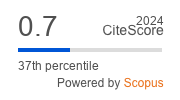A Population-Based Study on Agreement between Actual and Perceived Body Image
DOI:
https://doi.org/10.47723/kcmj.v16i2.255Keywords:
Obesity, BMI, Body Image, Perception and General PopulationAbstract
Background: Obesity tends to appear in modern societies and constitutes a significant public health problem with an increased risk of cardiovascular diseases.
Objective: This study aims to determine the agreement between actual and perceived body image in the general population.
Methods: A descriptive cross-sectional study design was conducted with a sample size of 300. The data were collected from eight major populated areas of Northern district of Karachi Sindh with a period of six months (10th January 2020 to 21st June 2020). The Figure rating questionnaire scale (FRS) was applied to collect the demographic data and perception about body weight. Body mass index (BMI) used for assessing the actual body weight status. Cohen's Kappa statistics were performed.
Results: Out of 300 participants, n=143 were males, and n=157 were females. In reality, according to BMI, 6 % were underweight, 47 % were average, 28 % were overweight, and 19 % were obese. According to perception, 8% of participants were underweight, 39 % were average, about 45% were overweight, and 8 % were obese. The mean score of real BMI was 25. 51±5.62 and figure rating score was 4.81±1.75. r value showed a strong positive relationship between both variables with a a P-value of <0.001. Cohen's Kappa score was 0.362. The rate of agreement between actual and perceived body weight status in the general population was 53.88%, and the disagreement rate was 46.12%
Conclusion: There was a weak agreement in the perception and realities of the self-image of people have the wrong impression about their body image.














